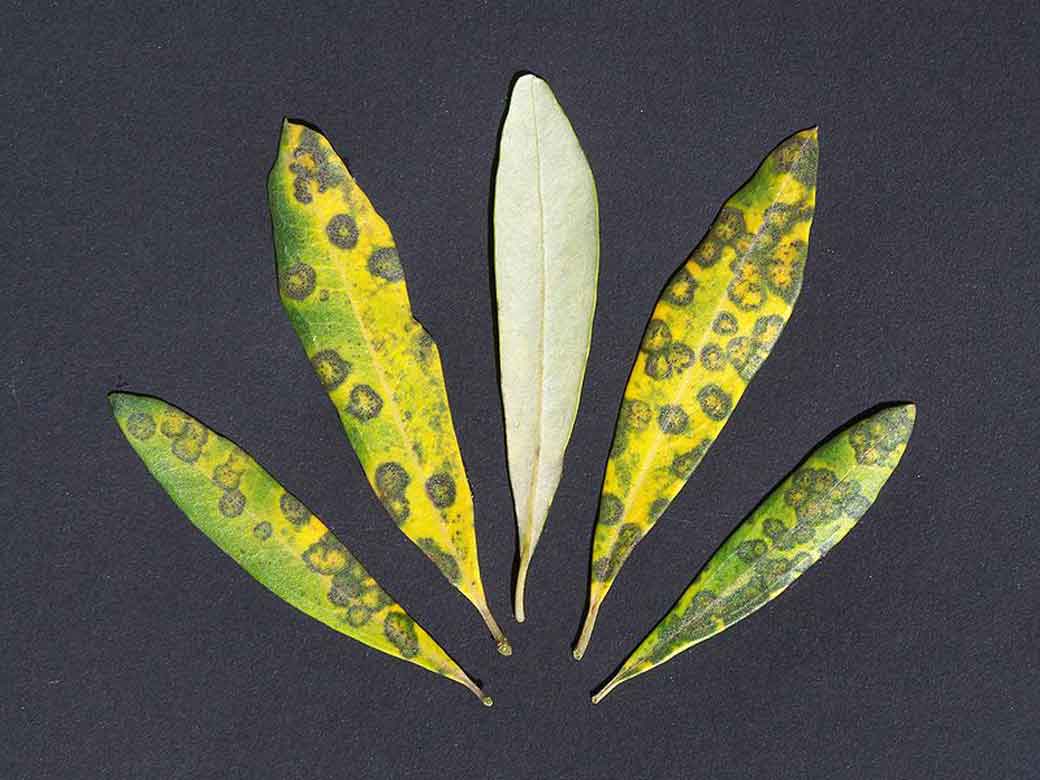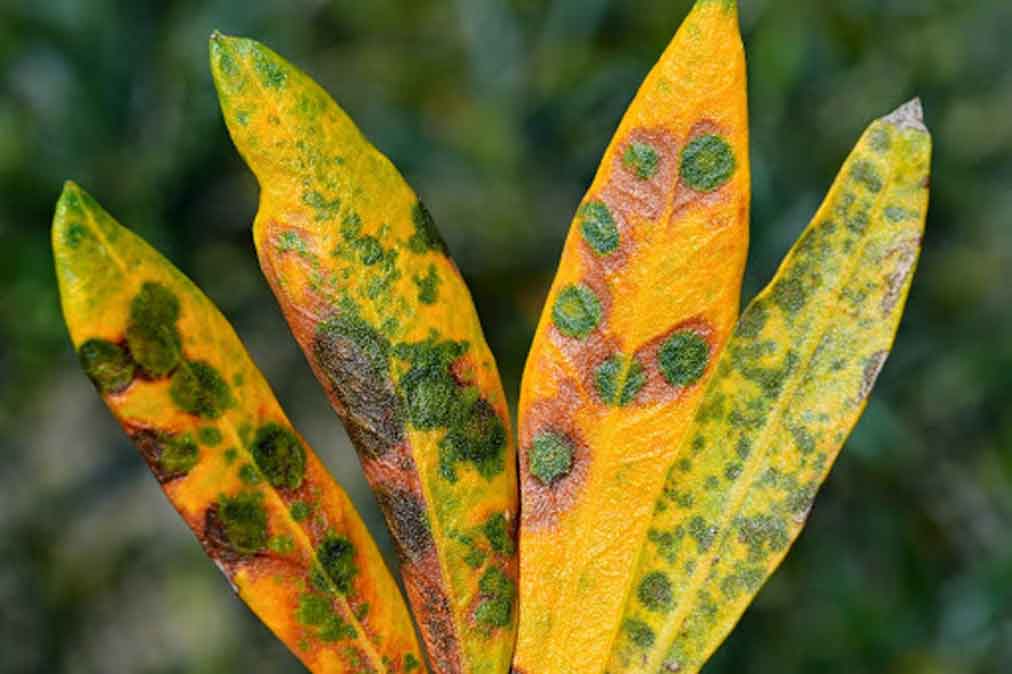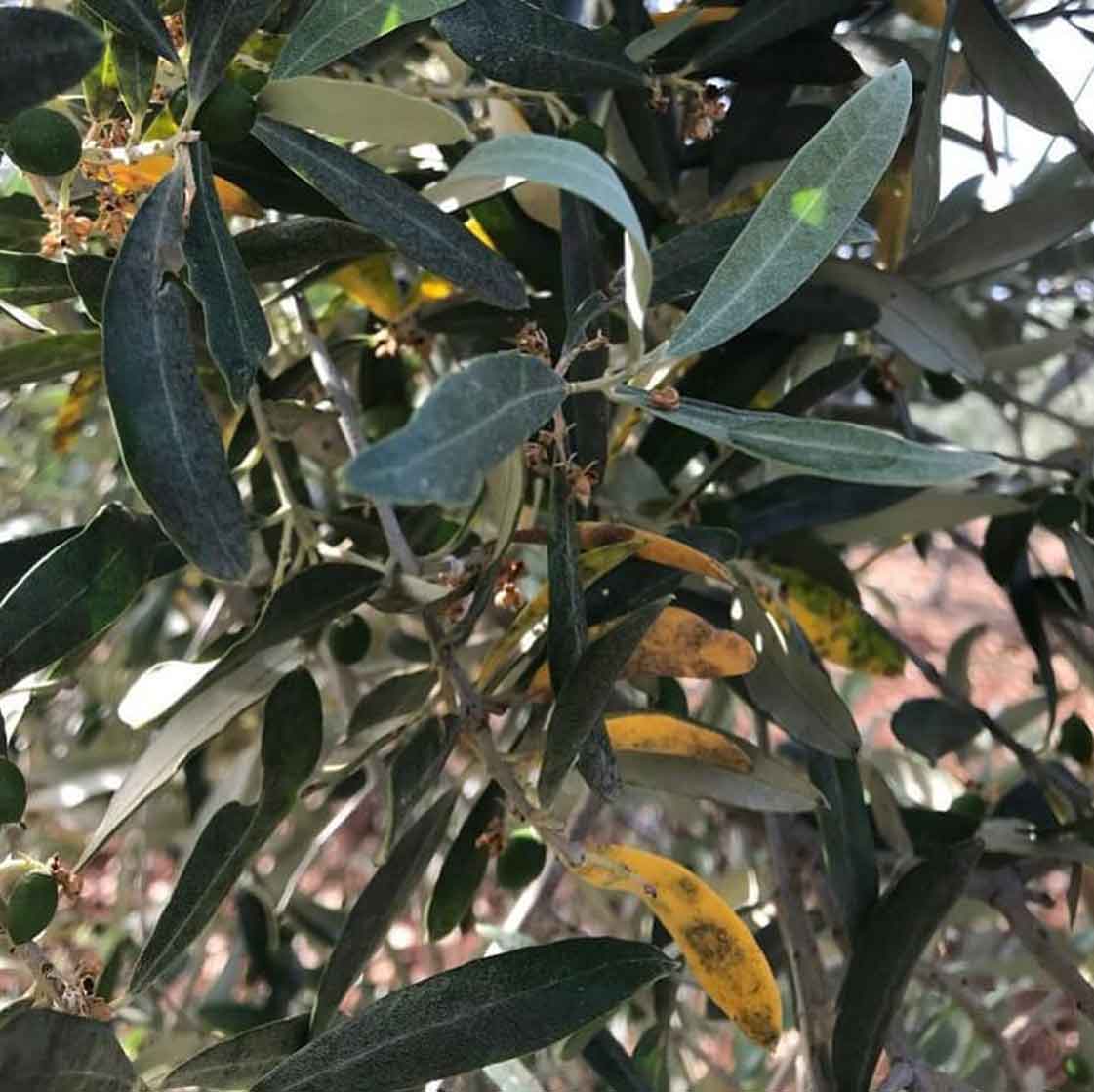|
|
| The olive trees had been suffering from attacks by a problem commonly known as Olive Leaf Spot or Peacock Spot Disease caused by Cycloconium oleaginum Spilocea oleaginea. This study demonstrates that the olive leaf spot disease could be controlled biologically by several bacterial strains. More lesions are developed in the lower part of the tree. Leaves may drop prematurely and twig death may ocur due to defoliation (Civantes, 1999). |
 |
The disease is chemically controlled by several and yearly sprays of fixed coppers soon after harvesting (Vossen, 2004). Biological control may be an alternative to chemicals in the control of some pathogenic fungi, reducing environmental pollution (Handelsman et al., 1990). |

|
Certain rhizosphere bacteria including Pseudomonas and Corynebacterium were used to control different plant fungal diseases like Pythium damping-off and some root rot fungi (Parke et al., 1991). Others like Bacillus subtilis that exhibits insecticidal, antifungal and antibacterial activities were used to control Rhizoctonia solani damping-off (Asaka and Shoda, 1996), and bean leaf rust caused by Uromyces phaseoli (Baker et al., 1983), where some Bacillus species were found to show antimicrobial activities (Gebreel, 2008) and effectively control brown rot of rice (Islam and Nandi, 1983). |
Spilocea oleaginea Isolates were collected, in October 2008, from symptomatic olive trees, where leaves are showing typical symptoms. Leaves were cut into small pieces 0.5 cm length, plated on modified PDA media (39 gm PDA, 1 gm di-potassium phosphate, 1 gm sodium nitrate, 2 gm sucrose per litre) at 22 ± 1°C for 7 days, then sub-cultured on new plates containing the same media for 24 h before treatment with bacterial strains. |
| Spilocea oleaginea bacterial isolates used in this study varied in their in vitro control activity against the leaf spot olive fungus C oleaginum (Figure 1). B. subtilis NB-6 isolate showed the highest control activity, where the fungal growth area was greatly reduced to 6.88 cm2 compared with the control Ai-Khatib et al. 65 41.75 cm2 (Table 1). Cycloconium oleaginum the maximum growth area of the fungus was observed when it was treated with B. Cereus (NEB II voru), where the total growth area was 46.25 cm2 exceeding the growth area of the control (41.75 cm2) and significantly different from all other treatments. |
 |
|
|
|
|

